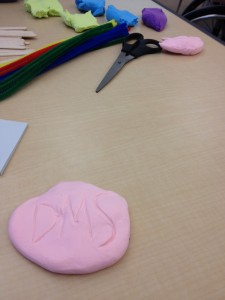Last week was not what I expected. Primarily because I didn’t read the page announcements to even know that we would be in a different classroom environment! Aside from that, the seminar itself was incredibly unique and surprisingly helpful. Here’s why:
First off, I loved how the Design For America defined ‘design’. After a few of my peers and I contributed our own definitions of what designing was, our student leaders from DFA stepped in. Essentially, designing is creating for the purpose of dealing with problems that real people face. The process in which DFA taught us to go about doing this was the surprisingly helpful part.
We learned the process through a series of team brainstorming activities. The general flow of the process was as follows: Identify a specific problem faced by a specific demographic, come up with every single cause of the problem, list off ways that the problem could potentially be solved (no matter how fantastical) and finally refine the ideas into a problem solving product. This was no short process. To come up with innovative designs to solve the problem at hand, each team had to be completely open to all ideas and vantage points. Once everything in terms of problems, their effects and potential solutions was on the table, that’s when a more critical approach was needed to refine and turn the pool of ideas into a product.
Although it may seem like I am just describing standard brainstorming, I can honestly say it isn’t an approach I have ever taken before. Rather than identifying a problem and immediately rattling off solutions, we were forced to systematically break the problem down. The systematic approach was anything but rigid. It forced my group to be open to absolutely anything and avoid criticism that could harm our ability to innovate. Being open to anything and everything that popped in our head made the process of narrowing down the most constructive ideas a piece of cake. My partners thought of things that I personally dismissed in my own head. In the end, our end product was something that I would have completely doubted to be possible on my own, but accepted once I saw it through the lens of my partners (portable bluetooth stickers for a steering wheel!)
This process of designing is something I know I will have to use when I begin experimenting during class if I expect to create something innovative, aesthetic and practical. Pure inspiration is great, but not always the most reliable way to create and solve problems!






